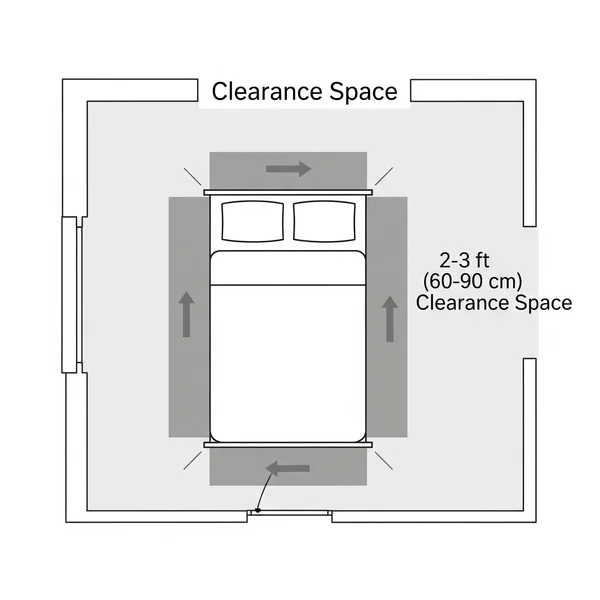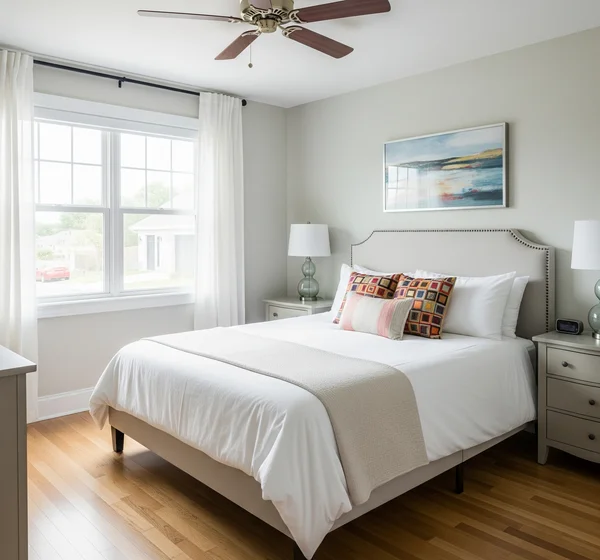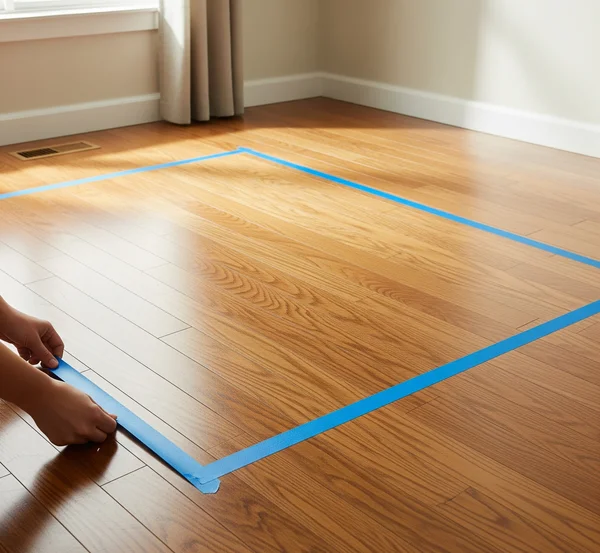Bed Size for Your Room: A Practical Measurement Guide
Matching Bed Size to Room Size: Your Ultimate Layout Guide
You've found the perfect bed—it's comfortable, stylish, and exactly what you've been dreaming of. But then the nagging question hits: will it actually fit in your room? How do I choose a bed size for my room? Choosing the right bed size for your room size is about more than just avoiding a tight squeeze; it's about creating a balanced, functional, and restful space. This practical guide will walk you through 5 simple steps, from measuring your space to visualizing the layout, ensuring you can confidently select a bed that perfectly complements your bedroom. To compare your findings with actual mattress measurements, you can always view our complete bed size chart.
Step 1: Measure Your Room's Dimensions Accurately
Before you even think about specific bed models, you need solid numbers. Guesswork is your enemy here. How do I measure my room for a bed?
Tools You'll Need (Tape Measure, Notepad)
Grab a tape measure and a notepad or your phone's notes app. This simple preparation prevents having to re-measure later.
How to Measure Your Room's Length and Width
Measure the length and width of your room from wall to wall. It's wise to measure in a few different spots for each dimension in case your walls aren't perfectly straight, and use the smallest measurement. Write these numbers down.
Don't Forget to Note Doors, Windows, and Closets
Pay attention to fixed obstacles. Note the location and width of doorways (including the direction they swing open), windows (especially low-silled ones), radiators, and closets. These will affect your furniture placement options.
Step 2: Factor in Clearance Space (The Rule of Thumb)
A bed needs breathing room. This is arguably the most overlooked step in choosing bed size.
How Much Space Should You Leave Around Your Bed?
You need enough clearance space to walk comfortably, make the bed, open drawers, and not feel claustrophobic.

The 2-3 Feet (60-90 cm) Clearance Space Guideline
A good rule of thumb is to leave at least 2 feet (24 inches or ~60 cm) of space on the sides and foot of the bed that you need to access. If it's a high-traffic area, aiming for 3 feet (36 inches or ~90 cm) is even better. A side pushed against a wall needs no clearance.
Ensuring Comfortable Traffic Flow
This space ensures comfortable traffic flow and prevents your bedroom from feeling like an obstacle course.
Step 3: Account for Other Bedroom Furniture
Your bed doesn't exist in a vacuum. It shares the space with other essential pieces.
The Impact of Nightstands
Consider the width of your nightstands. A standard nightstand is about 20-24 inches wide. You need to account for this space on one or both sides of the bed. A majestic king bed size with two large nightstands requires significant wall space.
Dressers, Wardrobes, and Doors That Swing Open
Ensure you have enough clearance to fully open dresser drawers and closet or entry doors without them hitting the bed frame. This is a critical part of planning your bedroom layout.
Planning Your Furniture Placement
Think about where your other furniture will go in relation to the bed. This holistic view is key to a functional room.
Step 4: Match Bed Sizes to Recommended Room Dimensions
Now that you have your room's usable space measured, you can match it to recommended bed dimensions.
Quick Reference Chart: Bed Size vs. Room Size
Here’s a general guideline for matching bed sizes to room sizes, ensuring adequate clearance.
| Bed Size | Minimum Room Size (Approx.) | Recommended Room Size (Approx.) |
|---|---|---|
| Twin | 7' x 10' (2.1m x 3m) | 8' x 10' (2.4m x 3m) |
| Full (Double) | 9'6" x 10'6" (2.9m x 3.2m) | 10' x 12' (3m x 3.65m) |
| Queen | 10' x 10' (3m x 3m) | 10' x 12' or larger |
| King | 12' x 12' (3.65m x 3.65m) | 13' x 13' or larger |
| Cal. King | 12' x 12'4" (3.65m x 3.75m) | 12' x 14' or larger |
Example: Minimum Room Size for King Bed
As the chart shows, the minimum room size for a king bed is roughly 12 by 12 feet. This allows for the 76-inch (6'4") wide bed and just over 2 feet of clearance on three sides, assuming minimal other furniture.

Example: A Typical Queen Bed Room Layout
A queen bed room layout is very flexible. In a 10x10 foot room, it leaves about 2.5 feet of space on either side (if centered) and at the foot, which is comfortable for most setups.
Step 5: Visualize the Layout Before You Buy
Numbers are great, but seeing is believing.
The Masking Tape Trick: Outline Your Bed on the Floor
This is the best pro tip for choosing bed size. Use masking tape or painter's tape to mark the exact dimensions of the bed you're considering on the floor where you plan to place it. This gives you a real-world, tangible sense of its footprint.

Using Online Room Planners or Apps
For a more detailed floor plan, you can use free online room planning tools or apps to create a digital layout of your room and experiment with different furniture arrangements.
Special Considerations for Different Room Types
How you apply these steps can vary.
Choosing Bed Size for a Small Bedroom
In a small bedroom, every inch counts. You might have to compromise, placing one side of the bed against a wall. A Full or Twin bed is often the most practical choice. Consider frames with built-in storage to maximize space.
Selecting a Bed for the Master Bedroom
The master bedroom is usually the largest, offering more flexibility. Here, the choice between a Queen and King often comes down to personal preference for space versus a desire for more room for other furniture, like a reading chair or vanity.
Bed Sizes for Guest Rooms and Multi-Purpose Rooms
A Queen bed is often a great choice for a guest room as it comfortably accommodates both singles and couples. For a room that doubles as an office, a smaller Full or Twin might be more appropriate. You can find more guidance on bed dimensions on our site.
Choose Your Bed Size with Confidence and Perfect Your Layout
Choosing the right bed size for your room size doesn't have to be a stressful guessing game. By following these five practical steps—measuring, allowing for clearance, accounting for furniture, referencing guidelines, and visualizing—you can make a confident and informed decision.
Recap: The 5 Steps to the Perfect Fit
- Measure your room and obstacles.
- Plan for 2-3 feet of clearance.
- Account for other furniture.
- Match your room to recommended bed sizes.
- Visualize with tape before you buy.
Don't Compromise on Functionality for Size
A bed that's too large, no matter how comfortable, can ruin the functionality and feel of your bedroom. The goal is a harmonious balance between a restful sleep surface and a livable space.
Ready to Explore Sizes? See Our Full Bed Size Chart
Now that you have a better idea of what might fit, you can review all bed sizes to find the one that matches your measurements and needs.
Common Room and Bed Size Questions
Here are some quick answers to common questions about matching beds to rooms:
What size bed is best for a 10x10 foot room?
A Queen size bed (60" x 80") is often the best choice for a 10x10 foot room. It leaves about 2.5 feet of clearance on three sides, which is very functional. A Full bed would offer even more space, while a King bed would be extremely tight.
Can a King bed fit in a 12x12 foot room?
Yes, a King bed (76" x 80") can fit in a 12x12 foot room, but it will be snug. You'll have just over 2 feet of clearance on the sides and at the foot. This setup works best with smaller nightstands and minimal other furniture.
How do I arrange furniture with a large bed in a small room?
In a small room, prioritize functionality. Place the bed against the longest wall. Consider using tall, narrow dressers instead of wide ones. Wall-mounted shelves can replace bulky nightstands. Sometimes, placing a bed in the corner can open up more usable floor space.
What if my room has an irregular shape?
For rooms with alcoves, sloped ceilings, or odd angles, the "masking tape trick" is essential. It allows you to see exactly how a bed will fit within the usable, rectangular portion of your space.
Should the bed go on the longest wall?
Placing the head of the bed against the longest wall is a common interior design principle that often creates a sense of balance and a clear focal point. However, the best placement always depends on your specific room layout, including door and window locations. For more ideas, you can always browse our bedroom guides.